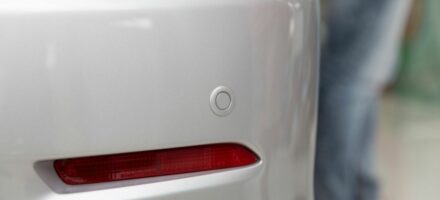
Parallel parking (otherwise known as reverse parking) is often thought of as one of the most challenging driving skills for a new driver to get the hang of. It can be difficult to get right, even if you are not a new driver. It differs from 'normal' parking manoeuvres, as the majority of the manoeuvres is done whilst the car is in reverse. Because you are spending so much of the manoeuvres in reverse, you need to be checking both in front and behind your vehicle at regular intervals for safety purposes. This article offers driving tips for parallel parking.

What is Parallel Parking?
As the name suggests, parallel parking involves parking behind other vehicles (that are parked directly alongside the kerb) that you have to negotiate in order to park safely. In most cases, you will be parking at the end of a line of cars.
Parallel Parking Safely
Firstly, you should bring your car parallel to the car that you want to park behind. This may involve driving forwards past the car that you want to park behind, so that you can reverse into a gap. This will give you a good opportunity to gauge whether or not your car will fit into the gap. You should be about one metre away from the line of cars before you start reversing. At this point, you should stop and make sure that it is safe to carry on reversing.

If it is, reverse slowly and carefully until the corner of the other car appears in your side window. Turn the steering wheel fully to the left (which will make the car swing to the side), and check your mirrors and blind spot to make sure that it is safe. Once you have checked this, you can carry on reversing until the front of your car lines up with the back of the other car. Make sure that there is enough room for you to clear the back of the other car, and turn the steering wheel fully to the right, which will make the car swing towards the kerb.
Once the car gets close to the kerb, turn the steering wheel slightly back towards the centre so that you don't crash into the kerb. Ideally, you should stay two car lengths behind the other car until you have completed the parallel parking manoeuvre. At this point, you can move the car slightly forwards or backwards so that you are in a safe parking position, but remember to leave enough room to get out again without problems.
To parallel park safely, you need to be making constant checks to the road in front of and behind your car to make sure that there are no dangers. Very few drivers (no matter how experienced they might be) manage to parallel park without having to make at least a few corrections if space is tighter than they anticipated, so you shouldn't be too surprised if you have to complete the parking manoeuvres in at least three stages.
Disclaimer: The information in the article is for general purpose information only and should not be constituted as legal advice. This article has been produced by a third party and Jardine Motors does not take any responsibility for the completeness, accuracy, or reliability with respect to the website or the information provided. Article last updated October 2017.



